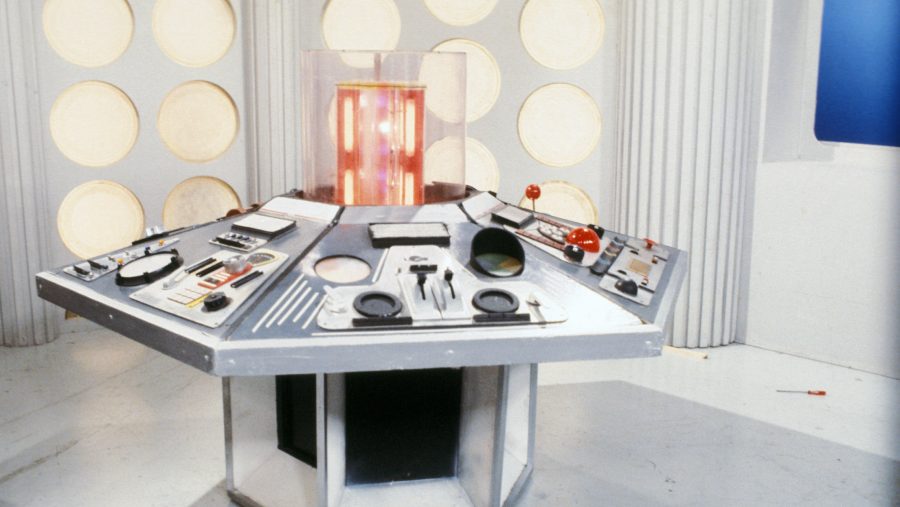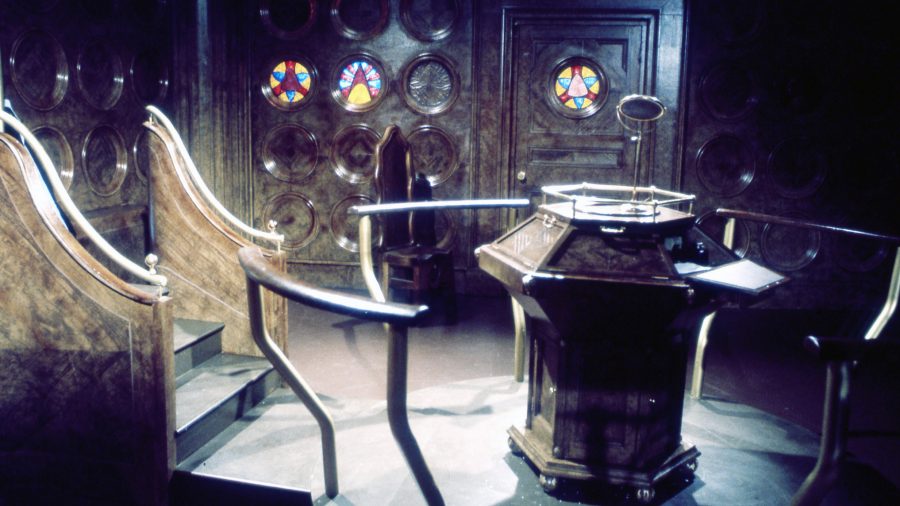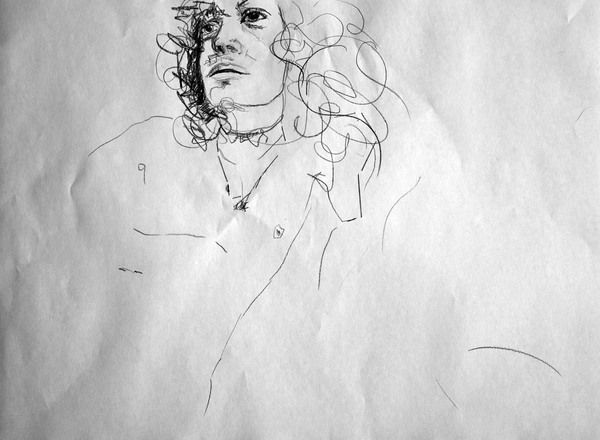Let us pray that organization expert Marie Kondo never comes within spitting distance of A Boy’s Room, part of the Studio Ghibli museum’s Where a Film is Born installation.
It’s not likely that every single item in the massive (and no doubt well dusted) collection of books, postcards, hand tools, pictures, figurines, and other assorted tchotchkes pictured above sparks joy, but the suggestion is that any one of them might prove the gateway to a fantastical tale, such as those spun by the museum’s executive director, master animator Hayao Miyazaki:
The room seems to belong to someone who was sketching at the desk just a few minutes ago. The room is filled with books and toys. The walls are all covered with illustrations and sketches. Hanging from the ceiling are a model of an airplane and a model of a Pteranodon. It’s a place where the owner of the room has stored his favorite things. This room provides lots of inspiration for what will go on to the blank piece of paper on the desk to become the origin of an actual film.
The Museum, which announced it would delay its reopening out of ongoing concerns related to social distancing during the COVID-19 crisis, recently shared some brief video tours of the Miyazaki-designed space, perhaps all the more magical for being empty.
One lucky viewer, who had trekked to the Tokyo suburb of Mitaka for an in-person visit, recalled the experience of actually being in A Boy’s Room:
Open up the drawers in this room, take the books off shelves to look at them, touch things, look through trunks—you might find little secrets to be discovered. One time I took an art book from the shelf and one of the employees came over to me. I was expecting to get reprimanded, but instead she kindly guided me over to a couch so that I could read the book. Miyazaki took care to design the space to be friendly to the exploratory nature of children, making sure that they could play unobstructed. It’s one of the reasons why you aren’t allowed to take photos inside—he didn’t want parents interrupting their experience to pose for photos they could care less about.
That philosophy is enacted throughout the museum. Kids can climb all over a life-size plush recreation of My Neighbor Totoro’s cat bus, but would-be Instagrammers are S.O.L.
A peek at the Space of Wonder room reveals Thumbelina-sized characters from My Neighbor Totoro, Nausicaä of the Valley of the Wind, and Kiki’s Delivery Service frolicking in a fresco of fruit, flowers, and vines.
The architectural elements are a particular treat, and suggest that there’s serious bank to be made, should Miyazaki ever consider extending the brand into a theme park-style hotel. (Something tells us he won’t.)
Once having seen a photo essay featuring some of the fancy refreshments others have enjoyed there, the tour of the empty Straw Hat Café does underwhelm a bit. Those cute little plates are just calling out for a slice of strawberry shortcake…
We’re unsure if museum staffers will be releasing more videos during their downtime, though we’re hopeful, especially since several in-person visitors have noted that the museum’s toilets are pretty noteworthy.
That said we’d happily settle for some of the short films that screen in the museum’s Saturn Theater.
You can follow the Museum’s YouTube channel just in case.
Meanwhile, here is Miyazaki’s manifesto detailing the kind of museum he wanted to make, right down to the café and the gift shop:
A museum that is interesting and which relaxes the soul
A museum where much can be discovered
A museum based on a clear and consistent philosophy
A museum where those seeking enjoyment can enjoy, those seeking to ponder can ponder, and those seeking to feel can feel
A museum that makes you feel more enriched when you leave than when you entered!To make such a museum, the building must be…
Put together as if it were a film
Not arrogant, magnificent, flamboyant, or suffocating
Quality space where people can feel at home, especially when it’s not crowded
A building that has a warm feel and touch
A building where the breeze and sunlight can freely flow throughThe museum must be run in such a way that…
Small children are treated as if they were grown-ups
Visitors with disabilities are accommodated as much as possible
The staff can be confident and proud of their work
Visitors are not controlled with predetermined courses and fixed directions
It is suffused with ideas and new challenges so that the exhibits do not get dusty or old, and that investments are made to realize that goalThe displays will be…
Not only for the benefit of people who are already fans of Studio Ghibli
Not a procession of artwork from past Ghibli films as if it were “a museum of the past”
A place where visitors can enjoy by just looking, can understand the artists’ spirits, and can gain new insights into animationOriginal works and pictures will be made to be exhibited at the museum
A project room and an exhibit room will be made, showing movement and life
(Original short films will be produced to be released in the museum!)
Ghibli’s past films will be probed for understanding at a deeper levelThe café will be…
An important place for relaxation and enjoyment
A place that doesn’t underestimate the difficulties of running a museum café
A good café with a style all its own where running a café is taken seriously and done rightThe museum shop will be…
Well-prepared and well-presented for the sake of the visitors and running the museum
Not a bargain shop that attaches importance only to the amount of sales
A shop that continues to strive to be a better shop
Where original items made only for the museum are foundThe museum’s relation to the park is…
Not just about caring for the plants and surrounding greenery but also planning for how things can improve ten years into the future
Seeking a way of being and running the museum so that the surrounding park will become even lusher and better, which will in turn make the museum better as well!This is what I expect the museum to be, and therefore I will find a way to do it.
This is the kind of museum I don’t want to make!
A pretentious museum
An arrogant museum
A museum that treats its contents as if they were more important than people
A museum that displays uninteresting works as if they were significant
Related Content:
Ayun Halliday is an author, illustrator, theater maker and Chief Primatologist of the East Village Inky zine. Here latest project is a series of free downloadable posters, encouraging citizens to wear masks in public and wear them properly. Follow her @AyunHalliday.











